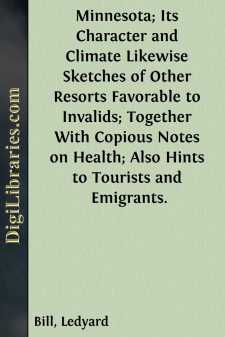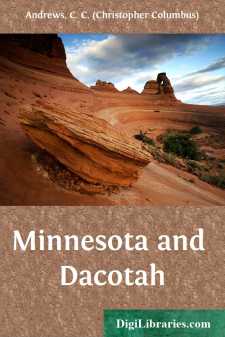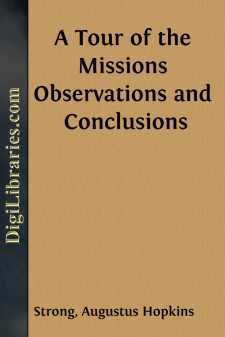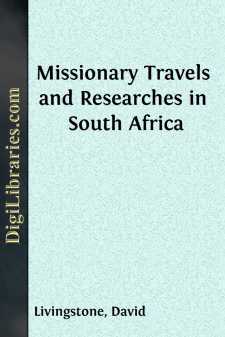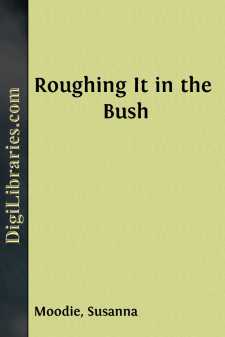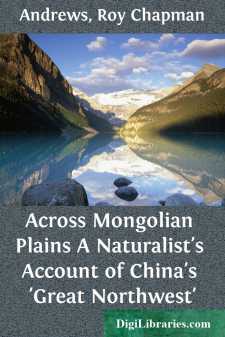Travel
- Africa 29
- Alaska 3
- Asia 46
- Australia & Oceania 26
- Canada 31
- Caribbean & West Indies 5
- Central America 1
- Europe 151
- General 39
- Maps & Road Atlases 1
- Mexico 10
- Middle East 18
- Polar Regions 7
- Reference 11
- Restaurants 1
- Russia 6
- South America 16
- United States 71
Travel Books
Sort by:
by:
Mark Twain
CHAPTER XXI. We voyaged by steamer down the Lago di Lecco, through wild mountain scenery, and by hamlets and villas, and disembarked at the town of Lecco. They said it was two hours, by carriage to the ancient city of Bergamo, and that we would arrive there in good season for the railway train. We got an open barouche and a wild, boisterous driver, and set out. It was delightful. We had a fast team and...
more...
by:
Mark Twain
We descended from Mount Tabor, crossed a deep ravine, followed a hilly, rocky road to Nazareth—distant two hours. All distances in the East are measured by hours, not miles. A good horse will walk three miles an hour over nearly any kind of a road; therefore, an hour, here, always stands for three miles. This method of computation is bothersome and annoying; and until one gets thoroughly accustomed...
more...
by:
Ledyard Bill
INTRODUCTORY CHAPTER. LEADING CHARACTERISTICS OF THE STATE. The water system of the Stare.—Its pure atmosphere.—Violations of hygienic laws.—A mixed population.—General features of the country.—Intelligence of the population.—The bountiful harvests.—Geographical advantages. The interest attaching to the State of Minnesota, as compared with other of the Western States, is two-fold. While...
more...
ST. CLOUD TO ST. PAUL. Importance of starting early— Judge Story's theory of early rising— Rustic scenery— Horses and mules— Surveyors— Humboldt— Baked fish— Getting off the track— Burning of hay stacks— Supper at St. Anthony— Arrival at the Fuller House. ST. PAUL, October, 1856. I WAS up by the gray dawn of the morning of yesterday, and after an early but excellent breakfast,...
more...
I A WEEK IN JAPAN The Pacific Ocean was very kind to us, for it answered to its name, and was pacific beyond all our expectations. Sixteen days of smooth seas and lovely weather brought us by way of Honolulu to Yokohama. Only the last day of our voyage was dark and rainy. But though the rain continued after our landing, Japan was picturesque. On four out of our six days we drove about, shut up in...
more...
Chapter 1. The Bakwain CountryвÐâStudy of the LanguageвÐâNative Ideas regarding CometsвÐâMabotsa StationвÐâA Lion EncounterвÐâVirus of the Teeth of LionsвÐâNames of the Bechuana TribesвÐâSecheleвÐâHis AncestorsвÐâObtains the ChieftainshipвÐâHis Marriage and GovernmentвÐâThe...
more...
by:
Mark Twain
THE 'BODY OF THE NATION' BUT the basin of the Mississippi is the BODY OF THE NATION. All the other parts are but members, important in themselves, yet more important in their relations to this. Exclusive of the Lake basin and of 300,000 square miles in Texas and New Mexico, which in many aspects form a part of it, this basin contains about 1,250,000 square miles. In extent it is the second...
more...
THE DISCOVERERS OF THE UPPER MISSISSIPPI. The 17th of May, 1673, Father Jacques Marquette, the missionary priest of St. Ignace, on what is now called the north shore of Michigan, and Louis Jolliet, a trader from Montreal, set out on a journey together. Huron and Ottawa Indians, with the priest left in charge of them, stood on the beach to see Marquette embark,—the water running up to their feet and...
more...
by:
Susanna Moodie
To lend, or not to lend—is that the question? "Those who go a-borrowing, go a-sorrowing," saith the old adage; and a wiser saw never came out of the mouth of experience. I have tested the truth of this proverb since my settlement in Canada, many, many times, to my cost; and what emigrant has not? So averse have I ever been to this practice, that I would at all times rather quietly submit to a...
more...
PREFACE During 1916-1917 the First Asiatic Expedition of the American Museum of Natural History carried on zoölogical explorations along the frontiers of Tibet and Burma in the little known province of Yün-nan, China. The narrative of that expedition has already been given to the public in the first book of this series "Camps and Trails in China." It was always the intention of the American...
more...




